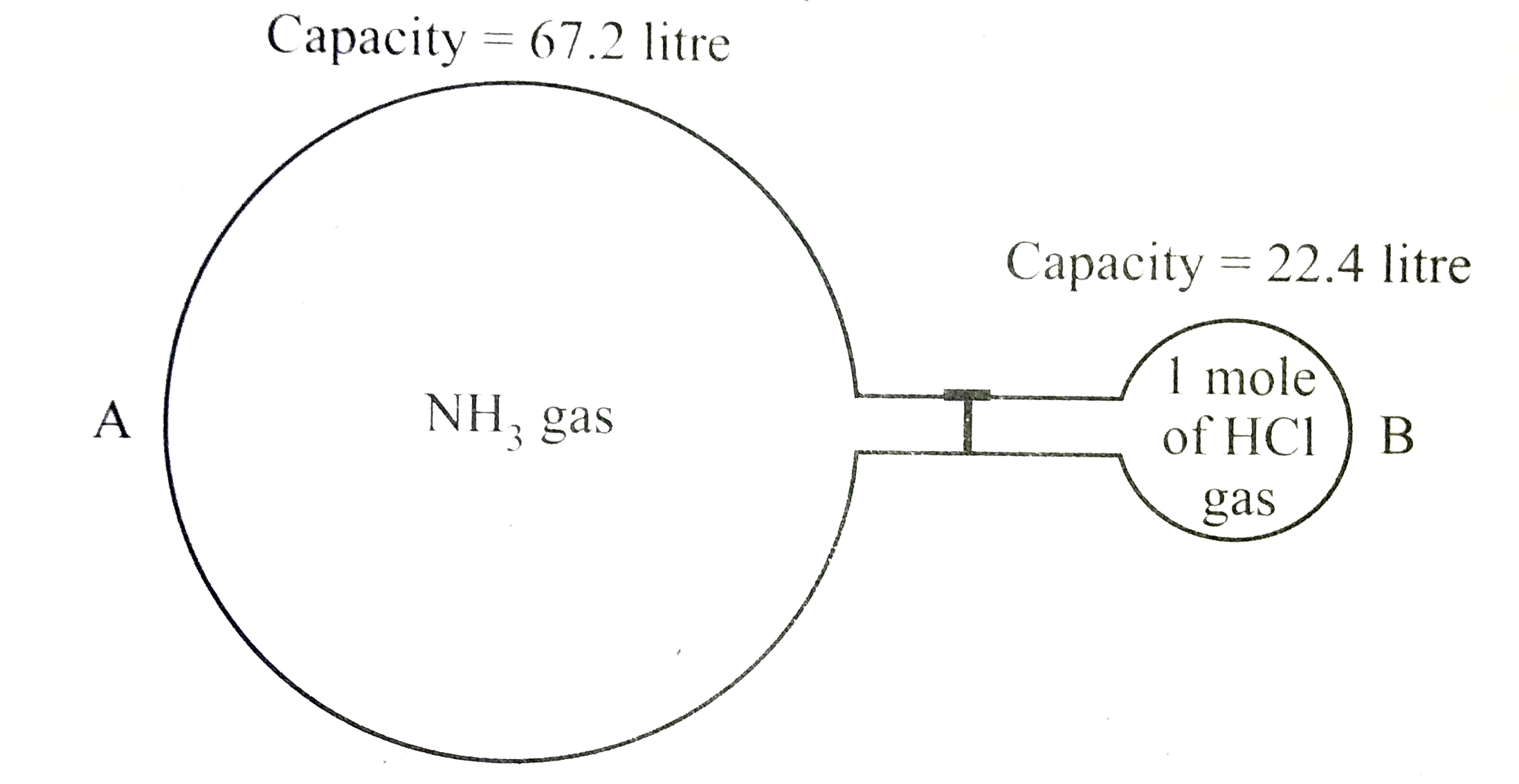When ammonia reacts with hydrogen chloride gas, it produces white fumes of ammonium chloride. The volume occupied by NH3 in glass bulb A is three times more than the volume occupied by HCl in glass bulb B at STP.

(i) How many moles of of ammonia are present in glass bulb A?
(ii) How many grams of NH4Cl will be formed when the stopper is opened?
(Atomic mass of N = 14, H = 1, Cl = 35.5)
(iii) Which gas will remain after completion of the reaction?
(iv) Write the chemical reaction involved in this process.
Text Solution
(i) Capacity of NH3 bulb = 67.2 litre
22.4 litre of NH3=1 mole
∴ 67.2 litre of NH3=122.4×67.2=3 moles of NH3
(ii) Atomic mass of 1(N)=1×14=14gAtomic mass of 4(H)=4×1= 4gAtomic mass of 1(Cl)=1×35.5=35.5g¯¯¯¯¯¯¯¯¯53.5g––––––
Mass of NH4Cl=53.5g
(iii) NH3 (Ammonia) gas will remain after the completion of the reaction.
(iv) Chemical equation of the reaction
NH3Ammonia+HClHydrochloric acid→NH4ClAmmoniumchloride
|
Topper's Solved these Questions
Similar Questions
Knowledge Check
If one mole of ammonia and one mole of hydrogen chloride are mixed in a closed container to form ammonium chloride vapor, then
AΔH=ΔUBΔH>ΔUCΔH<ΔUDthere is no relationship
A cylinder contains 68 g of ammonia at STP.
How many moles of ammonia are present in this cylinder?
View SolutionCalculate :
The volume occupied by 80 g of ammonia at STP.
View SolutionA cylinder contains 68 g of ammonia gas at S.T.P.
How many moles of ammonia are present in the cylinder?
View SolutionA cylinder contains 68 g of ammonia at STP.
What is the volume occupied by this gas?
View SolutionHow many moles of ammonia are produced when one mole of calcium nitride reacts with water?
View SolutionHow many moles of ammonia are produced when one mole of calcium nitride reacts with water?
View SolutionIf one mole of ammonia and one mole of hydrogen chloride are mixed in a closed container to form ammonium chloride vapor, then
View Solution

